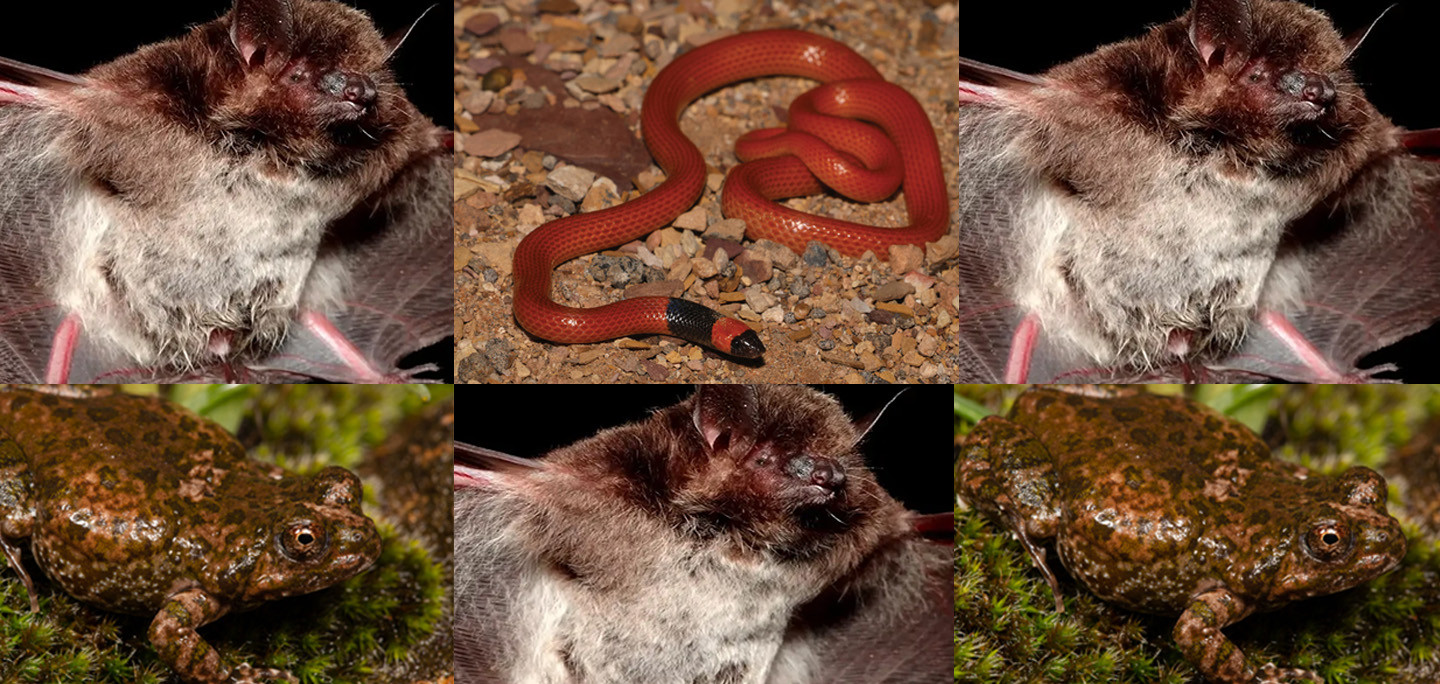Get 1000 Hours free
On the UCSD Supercomputer
Start Your Trial
CIPRES-supported publications for October 2024
Some of the many creepy crawly critter publications supported by CIPRES this month.
Happy Halloween!
Snakes: A new species of the colubrid snake genus Rhynchocalamus was found during exploration of the genus on the Arabian Peninsula.
Bats: Morphological and molecular analyses of blood from 39 bat species in Columbia provide the first report of Polychromophilus deanei in a silver-tipped myotis, Myotis albescens (Vespertilionidae).
Frogs: Pitch and frequency in frog calls undergo uncoupled evolution while ambient noise exhibits unpredictable effect on evolution of advertisement calls.
A new frog, Cacosternum cederbergense sp. nov. identified on the basis of call structure, phylogenetic distance, distribution, and morphology.
Lice:Bulgarian jumping plant lice are sap-sucking insects; the DNA barcodes for 15 species are published for the first time, and five new species are identified.
Worms: A cyber catalogue of nematodes of the Enchodelus genus, with all known species accessible and collected in one place.
Phylogeographic study of earthworms explains the natural history of the genus Prosellodrilus and its individual species.
Parasites: The first record of the trematode Tubulovesicula lindbergi in the southwestern Atlantic Ocean , and the first record of its appearance in the smalleye croaker.
The tadpole dwelling pinworm Gyrinicola is not one but at least 4 species in North America, resurrecting G. armatus (Walton, 1933) and recording 2 new species.
Detecting Trypansome DNA in blood clots allowed infections to be detected in bats, carnivores and marsupials that tested negative by other means.
Two new species of the cnidarian parasite Myxobolus that infect Mugil curema (Mugilidae) from Brazil.
Protaphelidium rhizocloniiis at the base of the poorly characterized aphelid family tree.
Virus and bacteria: Distinct viral clades of Caudoviricetes exist in biofilms and develop anti-defense systems to counter defense mechanisms of corrosive microbes.
Fungi: Three new species of fungi that grow on Peltigeraceae and Pannariaceae families, Abrothallus diederichii, A. epiclathratus, and A. nitassinan.
A new genus (Aquilariomyces) and nine new fungal species on Aquilaria a tropical/subtropical used in agarwood production.
Pseudoplagiostoma humilis sp.nov. the third such species in Brazil is identified as the causal agent of shoot blight and dieback on A. humile, a plant with multiple uses in food and medicine.
Rotting: Multilocus phylogenetic analysis was used to identify the fusarioid species (F. agrestense, F. gossypinum, F. grosmichelii and F. triseptatum) linked to cassava root rot in Brazil.
